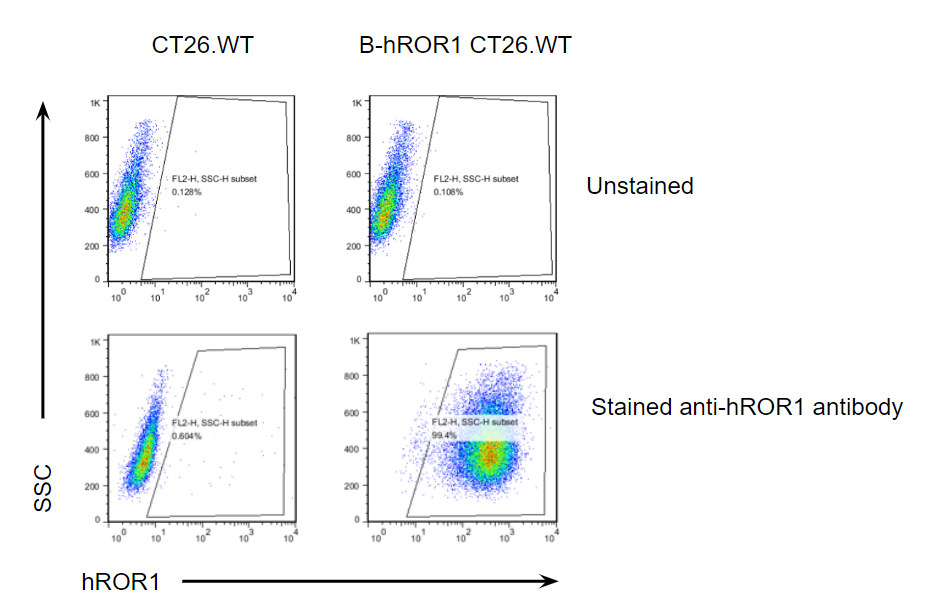Basic Information
Common Name
B-hROR1 CT26.WT
Catalog Number
322263
Alias
NTRKR1, dJ537F10.1
Disease
Colon carcinoma
Organism
Mouse
Strain
BALB/c
Tissue
Colon
Tissue types
Colon
Application
B-hROR1 CT26.WT cells have the capability to establish tumors in vivo and can be used for efficacy studies.
NCBI Gene ID
Description
The mouse Ror1 gene was replaced by human ROR1 coding sequence in B-hROR1 CT26.WT cells. Human ROR1 is highly expressed on the surface of B-hROR1 CT26.WT cells.
-
Targeting strategy

-
Gene targeting strategy for B-hROR1 CT26.WT cells. The exogenous promoter and human ROR1 coding sequence was inserted to replace part of murine exon 3 and all of exon 4. The insertion disrupts the endogenous murine Ror1 gene, resulting in a non-functional transcript.
-
Protein expression analysis

-

ROR1 expression analysis in B-hROR1 CT26.WT cells by flow cytometry. Single cell suspensions from wild-type CT26.WT and B-hROR1 CT26.WT cultures were stained with species-specific anti-ROR1 antibody. Human ROR1 was detected on the surface of B-hROR1 CT26.WT cells but not wild-type CT26.WT cells.


